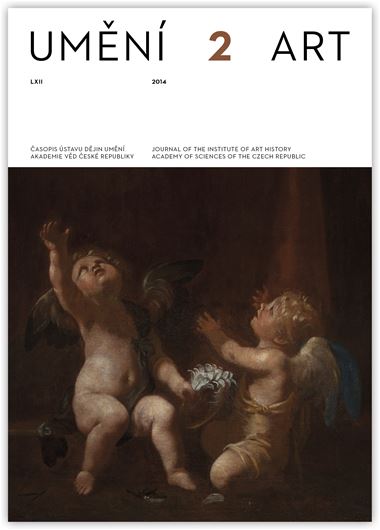Hana Černá
Regotizace pražské barokní gotiky. Proměny kostela Panny Marie a sv. Karla Velikého na Karlově po roce 1871
The article describes the baroque-gothic appearance of the chancel in the Church of the Virgin Mary and Charlemagne in Karlov in Prague prior to the modifications made to regothicise it in 1871–1873. The restoration work in which the baroque elements were removed from the interior of the chancel was led by Alois Turek (1810–1893) from Prague’s municipal authority with the approval of the Vienna-based Central Committee for the Study and Preservation of Artistic and Historical Monuments. A surprisingly accurate picture of the exact state of the chancel in 1740 is provided by newly discovered and evaluated archive and iconographic sources, restorers’ reports, and most notably surveys that were carried out by August Prokop, Friedrich Schulk, and Carl Laužil, students of architecture of Friedrich von Schmidt at the Academy of Fine Arts in Vienna who were on a study trip to Prague in 1864. According to the surveys and iconographic sources, the chancel decorations consisted of a gothicising painting in the spans of the vaulting and a baroque strip of acanthi and bell-shaped flowers executed in relief in the stucco. The Viennese surveys confirm that the gothicising painting work was done in the period before the chancel was re-gothicised. They also capture the important detail of the no longer extant baroque stucco duplicate pyramidal capitals of the vaulting shafts. The painting was restored to its original appearance in 1740 during restoration work in 1966–1967, and of the decorative stucco work just the bas-relief in the vaulting was restored. When this newly documented baroque-gothic chancel and the nave of the church in Karlov are compared to the interior of the eastern part of the Church of the Virgin Mary, St Wolfgang and St Benedict in Kladruby u Stříbra, which is the work of Jan Blažej Santini Aichel (1677–1723) done in 1718–1726, it is apparent that the artists behind the restoration of the Karlov church’s interior clearly drew inspiration from the work of J. B. Santini Aichel. The theory that the baroque renovations introduced into the church in Karlov were the hypothetical work of František Maximilián Kaňka (1674–1766) can be reliably proved as credible from the Santini-esque capitals in the Karlov church, identical examples of which are found, for instance, in the baroque renovations to the Augustinian monastery church in Roudnice nad Labem that are documented as the work of Kaňka.
Full-text in the Digital Library of the Czech Academy of Sciences:
https://kramerius.lib.cas.cz/uuid/uuid:0419bb5c-4661-4aba-988b-7524d5a8eda0
< back

